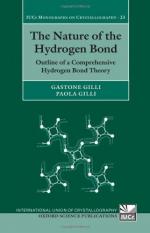|
This section contains 744 words (approx. 3 pages at 300 words per page) |

|
A hydrogen bond results from an interaction between two electronegative atoms (usually oxygen, nitrogen, or fluorine) and a hydrogen atom, which is covalently bonded, to one of them. One of the most interesting and essential examples of hydrogen bonding occurs in the deoxyribonucleic acid (DNA) molecule. The double helix nature of this molecule is the result of hydrogen bonds established between nitrogenous (nitrogen containing) bases in the two component chains comprising each helix. The fact that these bonds are strong enough to provide stability, but weak enough so that the strands of the DNA molecule can separate relatively easily, is essential for the activity of this most important genetic material. Hydrogen bonding allows DNA molecules to unzip, breaking and reforming hydrogen bonds as needed during the process of replication.
A covalent bond between two atoms is formed by each atom contributing an electron to a molecular...
|
This section contains 744 words (approx. 3 pages at 300 words per page) |

|


